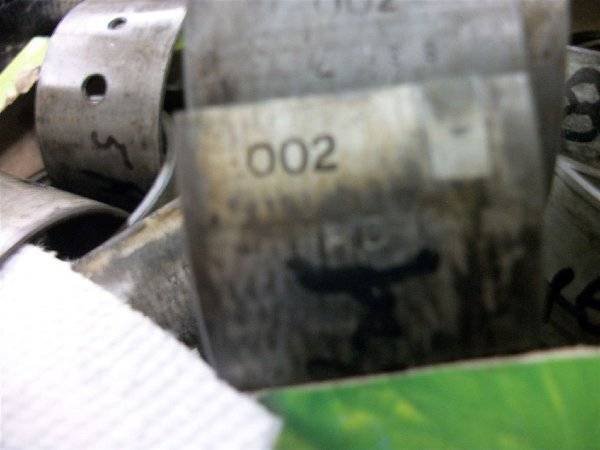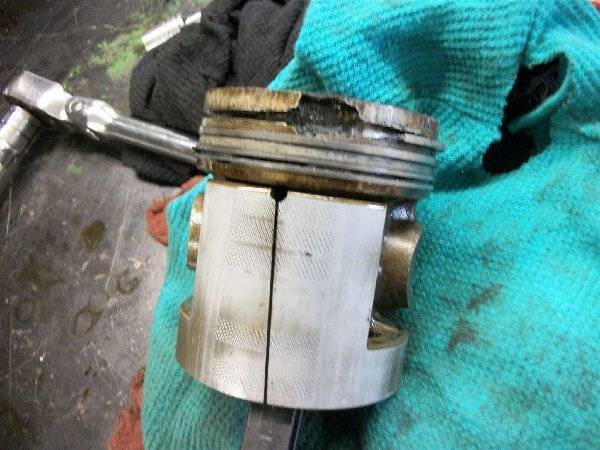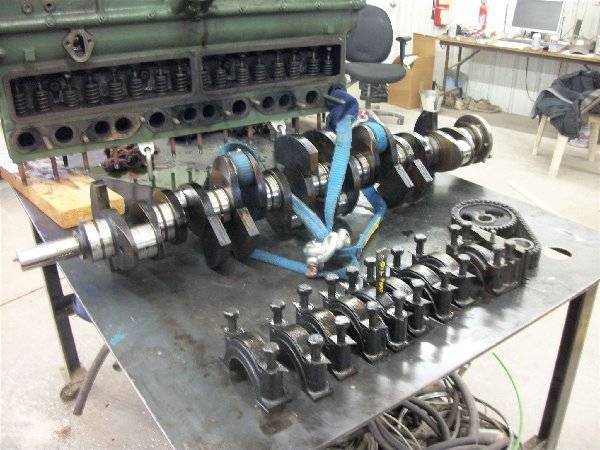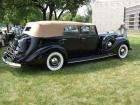|
Re: 1941 packard 180
|
||||
|---|---|---|---|---|
|
Just can't stay away
|
thank you Marston yes i did cut the ridge on all cylinders before taking the pistons off cylinders i,,put pictures later Maurice
Posted on: 2018/2/5 16:28
|
|||
|
||||
|
Re: 1941 packard 180
|
||||
|---|---|---|---|---|
|
Just can't stay away

|
I think Marston was correct, but not about your removal,
If the engine had an in car overhaul some time earlier but the ring ridge wasn't removed completely, was then started, almost immediately the problem would occur. This would explain the symptoms you were having,
Posted on: 2018/2/5 20:13
|
|||
|
||||
|
Re: 1941 packard 180
|
||||
|---|---|---|---|---|
|
Just can't stay away
|
good afternoon everybody i dismantled engine completely yesterday and this morning brought the block,the crank and the head to machine shop in montreal everything is zero we decided to rebore the block .030 new pistons and rings. the crank has some hairlines scratches he will try to polish it i already found std. main bearings and for the rods i found .002 set of bearings the head will be shaved .005 for make sure it is straight i have a quetion for you guys did you ever seen blue ink marks on the conn. rod bearings -002 usually i think it was punched may be i am wrong i will try to put pictures thanks have a nice day
Posted on: 2018/2/6 15:21
|
|||
|
||||
|
Re: 1941 packard 180
|
||||
|---|---|---|---|---|
|
Just can't stay away
|
here are some pics of engine
Posted on: 2018/2/6 15:30
|
|||
|
||||
|
Re: 1941 packard 180
|
||||
|---|---|---|---|---|
|
Just can't stay away

|
Sounds like it will be an excellent base to work from.
Of course be sure all the oil passages are clean.
Posted on: 2018/2/6 16:02
|
|||
|
||||
|
Re: 1941 packard 180
|
||||
|---|---|---|---|---|
|
Forum Ambassador

|
The knurling (for skirt expansion) on the piston shows a prior "rebuild" using existing pistons in somewhat worn bores, not an uncommon practice when trying to get more life from an engine but limited by budget and reluctance to pull the engine from the car for cylinder boring. Been there myself a few times, way back when.
Just a guess, the blue ink might be Prussian Blue, a marking/indicator ink commonly used in machine shops.
Posted on: 2018/2/6 16:29
|
|||
|
||||
|
Re: 1941 packard 180
|
||||
|---|---|---|---|---|
|
Forum Ambassador
|
I don't know of any measurements accurate enough that have been published or taken on the heads to ensure they have not already been milled and are at a critical point. Just be careful in taking off more and by all means lay the heads on the block and check for valve clearance before putting the head nuts back on. There have been some unlucky posters who had heads milled for flatness only to find out they had already been at the limit. A couple of people managed to bend their valves because of a failure to check before torquing the heads.
Posted on: 2018/2/6 16:41
|
|||
|
Howard
|
||||
|
||||
|
Re: 1941 packard 180
|
||||
|---|---|---|---|---|
|
Just can't stay away
|
thanks HH56 for info on the hesd machining i will go to minimum maybe .002-.003 and somebody told me that the marks on the back of rod bearings -002 with blue ink are for identify that the bearings are .002 oversize i don,t have the tickness measure of a std bearing for compare but i will measure it another way
Posted on: 2018/2/7 13:41
|
|||
|
||||
|
Re: 1941 packard 180
|
||||
|---|---|---|---|---|
|
Forum Ambassador

|
In addition to STD and the usual undersizes of 0.010, .020, .030, etc., service rod bearings were supplied in 0.001 and 0.002". Yours were probably installed at the same time as the knurled pistons, the engine was probably needing a full overhaul but the owner just didn't have the wherewithal to get it done properly. That it has 0.002 undersize rod bearings probably means the shaft will need need turning.
Posted on: 2018/2/7 16:12
|
|||
|
||||

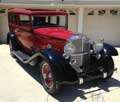
 (130.51 KB)
(130.51 KB)